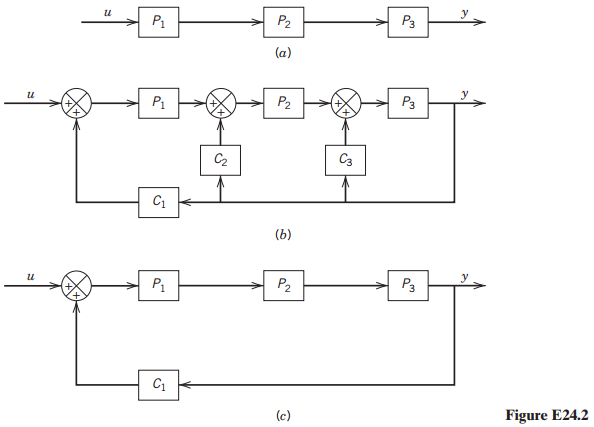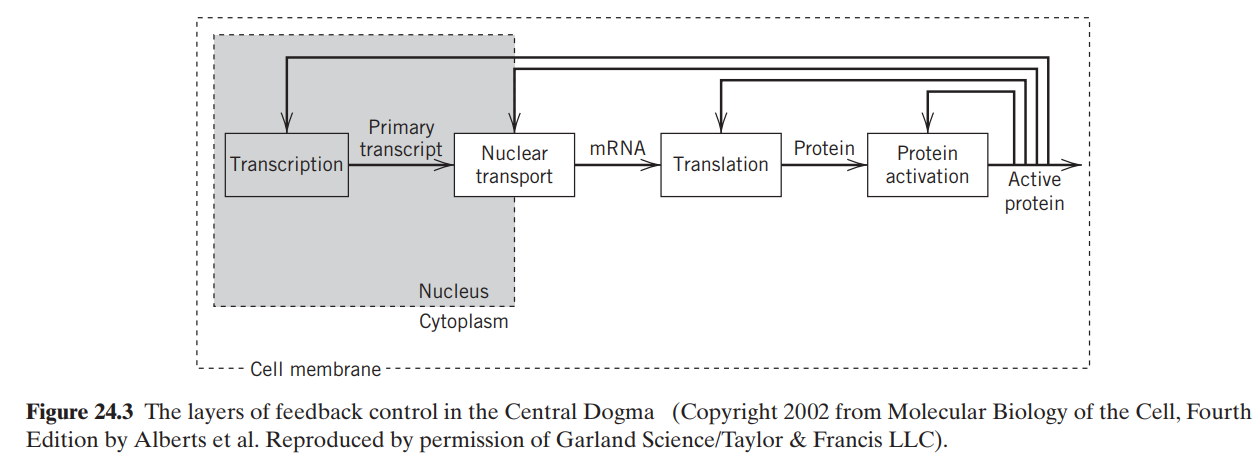Consider the block diagram in Fig. E24.2 of the multiple feedback loops involved in the Central Dogma
Question:
(i) Derive the transfer function from the external input (u) to the output (y) for each of the three cases shown in Fig. E24.2 (a), (b), and (c)
(ii) Assume that the feedback mechanisms operate via proportional control with corresponding controller gains Kci. Derive the closed-loop transfer function from the external input u to the output y in block diagram (b).
(iii) Consider a simplified biological circuit in which only genetic regulation is active (C1). Derive the closed-loop transfer function and comment on the key differences between this transfer function and the one from part (b).
(iv) Give several reasons why the natural feedback architecture with all three controllers operating is more effective than the control architecture in part (c).

Fantastic news! We've Found the answer you've been seeking!
Step by Step Answer:
Related Book For 

Process Dynamics and Control
ISBN: 978-1119385561
4th edition
Authors: Dale E. Seborg, Thomas F. Edgar, Duncan A. Mellichamp, Francis J. Doyle
Question Posted:





